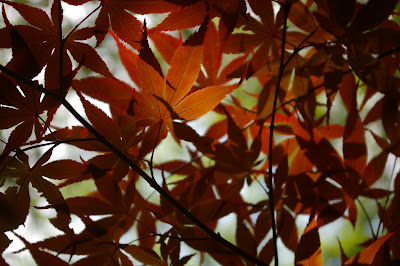Here's the graphic image they put together, followed by their overall concept statement:

 Here's the gallery...a beautiful building, with small rooms that one can rent for exhibits. Harajuku gets lots of traffic, so there was a good stream of people passing through, and several of the people we've met showed up to see the show.
Here's the gallery...a beautiful building, with small rooms that one can rent for exhibits. Harajuku gets lots of traffic, so there was a good stream of people passing through, and several of the people we've met showed up to see the show. Walking in the area, I saw a few flyers for the show...
Walking in the area, I saw a few flyers for the show...
 Most of the pieces were collage work, so the art could be prepared here in Japan using materials here. Work by Bethany (comparing mapping of sign images with spatial maps):
Most of the pieces were collage work, so the art could be prepared here in Japan using materials here. Work by Bethany (comparing mapping of sign images with spatial maps): Megan (who combined found objects with rubbings of corresponding Tokyo surfaces):
Megan (who combined found objects with rubbings of corresponding Tokyo surfaces): Anthony (who prepared an elaborate mapping across one wall of different Tokyo spaces):
Anthony (who prepared an elaborate mapping across one wall of different Tokyo spaces): Mike (who put together a book of found objects and images):
Mike (who put together a book of found objects and images): Lindsey (who had images hanging from the ceiling in clusters of red, blue, and gold):
Lindsey (who had images hanging from the ceiling in clusters of red, blue, and gold): Czar (who created giant floor pieces of receipts, here a receipt blown up to 3' x 6', and next to it a mat made of original sized receipts):
Czar (who created giant floor pieces of receipts, here a receipt blown up to 3' x 6', and next to it a mat made of original sized receipts): Rachel (who did a sequence on grids and motion based on the Shinagawa station):
Rachel (who did a sequence on grids and motion based on the Shinagawa station): Chris (who reworked some photographic images to map body language):
Chris (who reworked some photographic images to map body language): Mike (a second piece, water color on the wall, of "cute" images from pop culture):
Mike (a second piece, water color on the wall, of "cute" images from pop culture): David (who found older pop culture images from magazines, and put together a sequence):
David (who found older pop culture images from magazines, and put together a sequence):


































